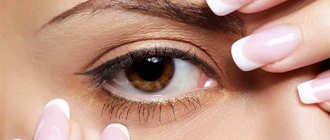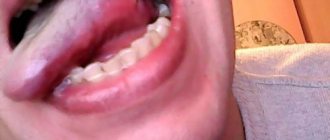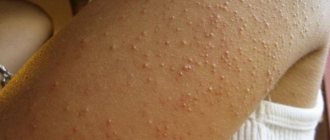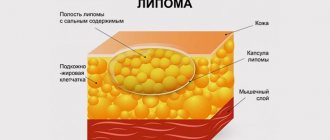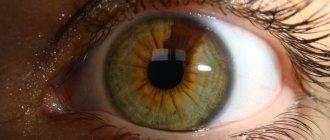The skin of the eyelids is the most sensitive on the body , therefore, with various disorders , various seals and bumps (balls) quickly form in these areas
Depending on the nature of the disease, these bumps differ in color, size and other characteristics.
And before trying to eliminate these formations, it is necessary to determine what caused their appearance.
Blepharitis
Inflammation of the edge of the eyelid.
It most often occurs due to infection with Staphylococcus aureus and usually affects people aged 40-70 years. The clinical picture depends on the type of disease. Patients complain of pain, itching and burning. Their eyelashes fall out. The edge of the eyelid thickens and becomes like a roller. A sticky secretion comes out of the eye. The mucous membrane turns red. Sometimes grayish-red nodules with small pustules appear. Blepharitis is difficult to treat and requires an integrated approach. It is necessary to identify foci of inflammation in the body and eliminate them with the help of antibiotics. Inflammation from the eyelid is relieved by treatment with brilliant green, antibacterial ointments and corticosteroids. Physiotherapy gives good results. It is also necessary to strengthen the immune system.
Lipoma
Often, when a ball appears, it is a lipoma, or, in the usual language, a wen. Occurs at any age. Sometimes a child may complain that he has such a defect.
Factors:
- fat metabolism disorder,
- poor and unhealthy diet,
- hormonal problems,
- increase in blood sugar concentration,
- genetics,
- kidney disease,
- pathologies of the endocrine system.
Sometimes this cosmetic defect causes serious inconvenience. At first it's just a white ball, then more appear. In advanced cases, a complication is likely: for example, ingrown eyelashes.
More information about lipoma and wen {amp}gt;{amp}gt;
Barley
Barley is an infectious and inflammatory formation that can appear under the eye or on the eyelid. In most cases, inflammation of the hair follicle is caused by streptococcus or staphylococcus. However, sometimes such a disease occurs against the background of a general decrease in immunity and hypovitaminosis or as a result of internal diseases (disturbances in the gastrointestinal tract, sinusitis, diabetes).
The disease develops quickly. At first, a small swelling appears under the eye, and over the course of several days the ball increases in size. After 2-3 days, a yellow abscess appears in the center of the tumor.
Treatment of stye on the eye is carried out using conservative methods. Among them:
- Treatment of the affected area during the formation of the ball with alcohol products (calendula tincture, ethyl alcohol, salicylic alcohol, iodine).
- The use of antibacterial eye drops (Levomycetin, Tsipromed, Floxal).
- Use of tetracycline and hydrocortisone ointments.
What to do if a ball (stye) appears under the eye, see the following video:
Milium
Or millet. It is a small cyst up to 3 mm in diameter. Appears due to blockage of the sebaceous glands. The capsule is filled with sebum and keratin. It does not become inflamed and does not hurt. Milia are not dangerous to health and do not require treatment. You cannot squeeze them out yourself. If you wish, you can contact a cosmetologist who will open the cyst and remove its contents manually, with a laser or using electrocoagulation.
A white pimple on the eyelid is called milia (or millet). It does not belong to infectious pathologies, therefore it is not contagious to others. Typically, rashes do not cause discomfort, as they are painless rashes. However, a pimple is an aesthetic defect that is better to get rid of.
Milium is characterized by its small size and dense consistency. Sometimes it may resemble a drop of water resting on the skin of the eyelid. A white pimple (millet) appears without any prerequisites. First, one milia of very small size appears. If no measures are taken, the number of white pimples increases.
In addition to milia, other rashes may be observed in these places. These include various inflammatory, infectious and oncological processes. They differ in size, consistency and content. The white color of pimples may be due to the accumulation of pus. This is one of the hallmarks of inflammatory rashes. When milleting occurs, the contents of the pimple are the secretions of the sebaceous gland. Also, the color of milia does not change, unlike other types of skin rashes.
Types of seals
In rare cases, a lump can appear on both eyelids at the same time, but, as a rule, it appears only on the upper or lower eyelid. Regardless of whether the resulting lumps cause pain or inconvenience, they look very unattractive, so most patients immediately turn to specialists for help. According to statistics, the cause of a lump on the eyelid can be chalazion, barley, papilloma, boil and others.
Seals on the eyelid can have a different nature
Table. Types of bumps on the eyelid.
| Type of seal | Description |
| Papilloma | Externally, papilloma resembles a small wart with a rough surface. It can appear on any part of the body, including the eyelids. As a rule, when papilloma appears, the patient does not experience pain, but the formation is very unattractive in appearance, so psychological discomfort occurs. |
| Furuncle | A common phenomenon caused by the development of a necrotic inflammatory process affecting the sebaceous glands, eyelash follicles or other tissues. As a rule, a boil appears on the upper eyelid, next to the eyebrow. The peculiarity of this type of compaction is that after treatment a scar remains on the patient’s skin. Self-medication or squeezing out a boil is highly discouraged, as this can lead to serious complications, such as blood poisoning. |
| Xanthelasma | In fact, xanthelasma looks more like a flat, yellow-colored plaque rather than a lump. Most often occurs with the development of diseases such as diabetes mellitus or hypercholesterolemia. But the development may also be caused by lipid metabolism disorders in the patient’s body. The formation does not go away on its own, so at the first sign of it you need to seek help from a doctor. |
| Milium | A small formation on the upper or lower eyelid, causing a lot of discomfort to patients due to its asymptomatic course. As a rule, the diameter of such growths does not exceed 5 mm. Doctors classify millium as a group of white internal acne due to its pathogenesis and structure. |
| Chalazion | People call this sore cold barley or hailstones. Formation occurs when the sebaceous glands located in the eyelid are blocked. As a result, a sebaceous mass begins to accumulate inside the cone, thereby forming a hard lump. Untimely treatment often leads to the development of inflammatory processes and suppuration, in which the purulent mass comes out of the lump through fistulas. |
| Barley | Another type of bumps on the eyelids, which is considered the most common. As a rule, barley is accompanied by painful sensations and goes away on its own in about 4-5 days. The cause of barley formation is inflammation that occurs when the sebaceous glands are blocked. There is an internal and external appearance of barley. Their main difference lies in the type of inflamed gland. If the internal type is accompanied by inflammation of the meibomian gland, then the external type is accompanied by the sebaceous gland. |
On a note! If timely medical assistance is not provided, the resulting lump can result in problems for the patient in the form of serious complications. Therefore, at the first signs of the disease, you should immediately consult a doctor.
White dot on the upper eyelid - photo
Lump on the upper or lower eyelid: why it appears, how to treat
For each cause of the formation of pathology on the eyelid, there is its own special treatment.
How to treat stye?
Often, in the treatment of barley, they resort to the use of medications, for example:
- You can use eye drops with an antibacterial effect: chloramphenicol, albucid. How to use them correctly can be found in the instructions from the manufacturer or from an ophthalmologist.
- Antimicrobial ointments: tetracycline, erythromycin in the form of ointment. They are recommended for use at night.
- If there is a need to wash the eyes, it can be done using antiseptic solutions such as Miramistin or Chlogrexedine.
If you do not resort to treatment, the process of full ripening of barley is approximately 10 days, and with treatment the period is reduced to 4 days. Barley spells are also actively used.
Only a specialist can prescribe an effective treatment method, but there are some treatment methods that you need to know:
- At the initial stage, it would be advisable to prescribe drugs that remove pus and relieve inflammation. These can be chloramphenicol drops or tetracycline ointment.
- You can also use antiseptics.
- You can resort to using physiotherapy.
- If necessary, a course of glucocorticoids can be prescribed.
If the use of medications does not give the desired result, you can resort to surgical removal, which is performed under local anesthesia and lasts about ten minutes.
There is no need to try to squeeze out acne on your own to avoid infection. To do this, you can go to a cosmetology office, where a specialist will resort to mechanical removal, using a laser or electrocoagulation. The required method is selected after diagnosis.
This disease is not of independent origin, but appears after a change in lipid metabolism in the patient’s body. Therefore, it is necessary to cure the source of inflammation, and the rash itself will go away on its own.
Only an ophthalmologist can select an effective treatment method. He will prescribe the use of external and internal antibiotics or, if necessary, prescribe surgical removal of purulent contents. You should not do this on your own to avoid complications.
Human eyes help us to understand the world around us and exist fully in it. Many people in their lives have experienced the appearance of small lumps with a reddish or pink tint on the upper or lower eyelid. Most often, this does not pose a great danger to normal vision, but there are diseases that can reduce it or lead to the development of pathologies.
The appearance of lumps on the eyelid is not a rare phenomenon, which is facilitated by many factors.
Xanthelasma
This is a small, flat plaque with a yellowish tint that forms on the eyelids, face, or around the eyes. It appears more often in females who suffer from diabetes, hypercholesterolemia and a number of other disorders. Single manifestations are quite rare, often multiple, which do not go away without treatment. Xentelasma is a consequence of lipid metabolism failures that cause major diseases.
The most dangerous lump on the eye is a boil, which causes a purulent inflammatory process of a necrotic nature in the sebaceous glands with the connective tissue around them and the eyelash follicle. The main reason is staphylococcus. The standard location is the upper part of the eyelid, closer to the eyebrow. First, a painful ball forms, around which swelling forms.
After a couple of days, an abscess with a yellow tint appears at the top, which subsequently breaks through, and the contents come to the surface. But the rod remains, and after some time it comes out on its own. During the process, the patient may experience fever, weakness, and headaches. The basis of treatment is taking medications (antibiotics, analgesics), possibly opening the formation.
The eye is one of the most vulnerable human organs, including against various types of infections. A fairly common problem today is a lump that appears on the eyelid - on the lower, upper, or even both at once. Some of them can cause pain, others, by and large, do not cause any inconvenience. In addition, a lump that appears on the eyelid can be either large or small.
In most cases, such formations are so small that they are only a cosmetic defect. They are harmless and most go away without treatment. Sometimes the bumps can be itchy and irritating or can even cause vision problems. In such cases, even small bumps can be a sign of a serious underlying disease.
Small bumps are most likely pterygium or pinguecula. These two growths are the most common types of bumps that appear on the eye. It can also be a conjunctival pussy, which in some cases reaches quite large sizes.
Pterygium
Pterygium
Pterygium, also called “surfer's eye,” is a raised, wedge-shaped lesion that forms on the white of the eye and may extend into the cornea.
Contrary to the name, you don't have to be a surfer for these pterygium to appear. Prolonged exposure to the sun (especially in water) increases the risk of its development.
Exposure to ultraviolet rays is the main cause of this condition; other less common factors may include dry eye syndrome, prolonged exposure to dust and wind.
Pinguecula
Pinguecula
This is a yellowish thickening of the conjunctiva on the sclera, close to the edge of the cornea. The formation is not malignant and usually occurs in the middle of the sclera on the side of the nose, but can also occur on the opposite side.
The main cause of pinguecula is also exposure to ultraviolet rays. Other causes include dry eye syndrome, exposure to dust and wind. This explains why it is more common in people who spend most of their time in the sun.
In most cases, it is a harmless clear or whitish sac of fluid that forms on the conjunctiva of the eye. Most often it does not cause unpleasant symptoms, although it can be irritating because it creates a constant sensation of something in the eye. The cyst may be difficult to see with the naked eye, and so the patient may simply complain of an uncomfortable feeling in the eye without actually pointing out the cyst. But they also come in relatively large sizes.
Causes of formation include allergies, foreign body penetration, frequent rubbing of the eye, leading to damage to the conjunctiva.
Often such a cyst goes away on its own. But if it continues to grow, then steroid drops are prescribed or removal is carried out using a laser.
Most of the reasons described above do not cause pain. But specialized treatment and diagnosis are still required. Identifying the root cause can help prevent a similar problem from occurring in the future.
In addition to pain, the following symptoms may occur:
- Mild to severe itching in the eye area
- Constant burning sensation
- Redness around the eyes
- Swollen and inflamed eye
- Tearing
- Pain in the lower and upper eyelids
- Increased sensitivity to light
- Blurred or impaired vision in rare cases.
The ball on the side of the eye is most likely a stye. According to the Mayo Clinic, it appears as a red, painful lump that develops on the edge of the eyelid. It may look like a pimple filled with pus.
Although stye mainly forms on the outside, sometimes it can occur on the inner parts of the eyelid. The disease is caused by a mild bacterial infection that often clears up without treatment. In some cases, the lump may become too large and painful, in which case medical procedures such as drainage may be recommended.
A lump or bump on the eye usually refers to a formation on the eyelid or on the eyeball itself. It may be painful or painless. In any case, medical attention is needed to determine the underlying cause and its severity. The bump may be transparent, yellowish, large or small. In most cases, these bumps on the eyes are harmless and can go away on their own without treatment.
On the eyelid
Balls appearing under the eyelid are a common complaint in most patients. They can occur due to various conditions, such as eye irritation or allergies to certain foods.
Lumps in the eye are common inside the eyelids, but can also be found on the eyeball - the sclera (white part) or cornea.
The phenomenon of chalazion of the upper eyelid is associated with a disruption in the functioning of the meibomian gland, which serves to moisturize the eyelids. However, certain factors lead to an excessive accumulation of secretion, which threatens compaction in the gland canal. The chalazion itself is very similar to barley, but the latter is infectious in nature, accompanied by painful sensations and, when ripe, often disappears.
A ball on the upper eyelid can occur for a number of reasons:
- secretion of a very thick gland;
- hypothermia;
- colds;
Touching your eyelids with unwashed hands can cause a chalazion.
- pathological diseases of the gastrointestinal tract: gastritis, dysbacteriosis;
- conjunctivitis;
- improper wearing of contact lenses or intolerance to them;
- oily skin; skin diseases such as dermatitis, seborrhea, demodicosis or rosacea;
- lack of vitamin B, subsequent decrease in immunity;
- internal stye – inflammation of the hair follicle spreads to the nearby gland;
- abnormal growth - a tumor associated with cell proliferation;
- non-compliance with hygiene - excessive use of cosmetics, not removing a layer of mascara or foundation in time, touching the eyelids with unwashed hands.
Course of the disease
The disease does not develop so quickly - about two weeks. The first signs are expressed in a slight swelling of the skin under the upper eyelid. A lump on the eye may appear quite suddenly. The ball gradually reaches about 5 mm in diameter, but in the absence of positive dynamics and treatment it continues to grow smoothly.
If poorly positioned, the swelling can affect the eyeball, causing astigmatism and reducing vision. If the chalazion is not opened in time, then due to the blockage of the canal, a benign tumor is formed - a cyst, which can subsequently appear even after successful treatment.
Treatment
Often the balls on the eyelids do not threaten health and disappear without medication. But there are lumps that grow rapidly and spoil vision. Then you need to diagnose and choose the appropriate treatment method for the bumps.
- To cure a bacterial infection that causes the formation of tubercles, use antibacterial eye ointments (Tetracycline, Ofloxacin, Eubetal) or antibiotic tablets (Ciprolet, Ciprofloxacin).
- Fish oil supplements are effective against bumps on the eyelids.
- If the eyelids are painful, the doctor can use a special massage device to increase fat flow from the glands.
- Pinguecula is treated with lubricating eye drops (Oxial, Artificial tear).
- Inflammation in the sclera is relieved with drops of corticosteroids (Prednisolone, Dexamethasone, Prenacid).
- Large balls on the eyelids are removed surgically. For example, chalazion surgery is performed on an outpatient basis in 10–15 minutes under local anesthesia. The surgeon makes an incision in the skin or conjunctiva and then removes the contents of the growth.
Remember: you can only remove the eyeball with the help of a specialist, and not open it yourself.
Papilloma in the eye area
Sometimes the skin around the eyes may become covered with wart-like formations. Papillomas have a rough surface. Such growths look unsightly, especially when they are large and very visible.
It may be a ball on a leg or a flat growth.
The reason for this symptom is that a person has an active form of human papillomavirus in the body.
Under no circumstances should you use home methods on the skin near your eyes. If you choose the wrong recipe, your skin can be seriously burned. It is better to consult a doctor and he will recommend a way to eliminate papilloma.
Boils near the eyes
Such a ball in the form of a nodule with a yellow purulent head is quite dangerous. Often the skin may even swell. In this case, not only the eyelid swells, but also half of the face.
Often a person feels aches, weakness, temperature rises, and headaches.
Sometimes a ball with purulent contents under the eye “ripens”, then the mixture of liquid and pus breaks through and flows out. And in the place where the boil was, a scar remains.
When you notice something that looks like a boil, under no circumstances try to squeeze it out.
A not so harmless phenomenon is a lump next to the eye. The sooner you see a doctor, the better.
Phlegmon
It often causes a bump to appear on the outside of the lower or upper eyelid. Usually a complication of barley or other foci of infection in the body. Sometimes injuries to the skin and mucous membranes can trigger inflammation. The formation of a compaction is accompanied by fever, headache, and swelling of the lymph nodes.
A lump on the eye often signals the development of serious health problems. If it appears, you should contact an ophthalmologist or surgeon. It is forbidden to open the growths yourself. This can lead to dangerous complications and scarring.
Prosyanka
This type of bump occurs with equal frequency on the upper and lower eyelids. Millet grains can range in size from a poppy seed to a grain of rice and usually form in groups. Millums are the most harmless of all formations and cause only aesthetic discomfort. At its core, these are whiteheads localized in the eyelid area.
Millet removal should only be done by a cosmetologist. Since they do not carry the risk of complications, they are not considered an ophthalmological disease, but fall within the competence of a dermatologist-cosmetologist.
Prevention of millums includes caring for the eyelids, timely removal of dead epidermal cells, ensuring the cleanliness of the ducts of the sebaceous glands and pores of the skin around the eyes, as well as a balanced diet that excludes excessive consumption of fatty foods.
A millet is a small white internal blackhead that can form anywhere, including on the eyelid. These small lumps are also called milia. Millet is formed due to blockage of the sebaceous glands.
Symptoms of millet
So, what is characteristic of millet?
- the formation of small seals on the eyelid, usually no more than 2-3 mm;
- the appearance of compactions in groups;
- no pain;
- lack of redness and swelling;
Millet treatment
There are several ways to remove millet:
- manual method;
- laser removal;
- electrocoagulation.
A specialist will examine you and prescribe the appropriate method for removing the seal.
Symptoms and diagnosis
Diagnosis of a chalazion of the lower eyelid consists of an external examination by an ophthalmologist. If you have signs of the disease, but you doubt whether it is a chalazion or a stye, go for a consultation with a doctor, he will quickly make an accurate diagnosis and prescribe the correct treatment.
Symptoms of lower eyelid chalazion:
- first, a small compaction appears in the thickness of the lower eyelid, shaped like a pea;
- then the contents accumulate, the pea grows, a small tumor appears, a sensation of a foreign body, specks in the eye;
- the skin over the tumor is hyperemic, tense, slightly swollen, no pain;
- after the formation increases to a certain size, in addition to aesthetic discomfort, physical discomfort also occurs: mechanical compression of the eye, blinking is impaired, pain appears, and the field of vision is blocked;
- a dense capsule is formed, easily movable under the skin;
- if the tumor becomes inflamed, itching, burning, swelling, redness, pain, lacrimation appear;
- symptoms of inflammation can increase and subside, with a characteristic wave-like, chronic course.
What to do with tumors on the eyelids (video recommendations)
To avoid the appearance of pimples on the face, as well as their spread, the following rules must be followed:
- Cleanse the skin several times a day.
- Choose the right cosmetics. If necessary, it is better to consult a specialist.
- It is advisable not to use foundation or greasy cream if you have acne.
- Consult a dermatologist if pimples appear and undergo the necessary tests.
Be healthy!
Any problem associated with disruption of the normal functioning of the eye and surrounding tissues causes fear in us. To some extent, such experiences are justified, because the severe consequences of illness can lead to deterioration of vision or even blindness, which will significantly limit a person’s abilities. Therefore, even such a common and seemingly harmless disease as chalazion of the upper eyelids requires immediate medical attention.
Since the swelling of the lump is practically invisible at an early stage, the main symptom is itching or redness of the skin. As the lump grows, it becomes more noticeable, so the patient begins to feel the presence of a foreign body on his eyelids. Pain, as a rule, occurs only in cases when the lump begins to press on the surface of the cornea (this is especially pronounced during blinking). With the development of the inflammatory process, the area of redness gradually increases, as a result of which the inflammation spreads to the conjunctiva.
The patient may also suffer from a sharp deterioration in vision - the picture becomes more blurry. A purulent mass begins to accumulate in the cavity of the cone, which over time can come out through the resulting fistula on the skin and remain in the area of the corners of the eyes. The presence of purulent contents is an excellent habitat for various types of infection, which will only worsen the patient’s already difficult condition.
Compliance with preventive measures will prevent the development of stye, xanthelasma and other pathologies in which a lump may form on the eyelid. Prevention is as follows:
- observing the rules of personal hygiene (you cannot touch your eyes with your hands, especially if your hands are unwashed);
- Before each meal, be sure to wash your hands with soap. This will prevent the spread of bacteria throughout the body;
- at the slightest sign of irritation on the surface of the eyelids, it is necessary to apply a compress;
- get rid of excess weight if necessary;
- normalize your diet, stick to proper nutrition.
Experts also recommend paying attention to your immune system, that is, strengthening it in every possible way. A strong immune system will protect the body from various diseases, including preventing the appearance of bumps on the eyelids. By following these simple rules, you can protect yourself from serious health problems.
A yellowish bump on the eye in most cases is a conjunctival cyst.
A ball of different nature may appear on the eyelid. You need to find out the cause of the defect and determine whether to see a doctor or be treated at home.
Reasons for the development of a lump
There are many causes of stye and chalazion. The main factors are:
- The most common is lack of personal hygiene. Any dirt and dust causes inflammation and redness; if foreign particles are not removed immediately, the glands become clogged and the disease develops.
- Stagnation of the iron ducts of the eye. Severe hypothermia and weak immunity can provoke stagnation. At the bottom of the eyelid (in the exit canal), infectious fluid accumulates in the membrane, which subsequently turns into a lump.
- Untreated stye can provoke the development of chalazion; any draft can cause a relapse.
- Some eye diseases can also lead to this disease. Those pathologies that are accompanied by strong sebum secretion are dangerous.
- In children, barley and chalazion develop due to colds, severe runny nose and low immunity.
These are the main reasons, there are also indirect ones. Place of work and bad weather conditions can also trigger inflammation.


